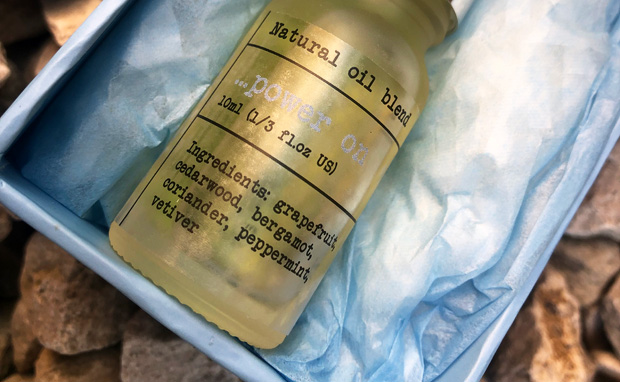Are The Essential Oils You Buy Sustainable?

Are The Essential Oils You Buy Sustainable?
Guest article by Kim Brookes from Perfino.
It may surprise you to hear that Rose Otto essential oil retails at around £48 for 2.5ml (half a teaspoon), especially if you are used to buying affordably priced oils claiming to be Rose, Neroli, or Jasmine, three of the most expensive essential oils on the market. If it’s affordable, it’s generally not the real thing. But why is it so expensive?
Well, it takes around 10,000 roses to produce 5ml (a whole teaspoon!) of this precious oil or, put another way, 5 dozen roses to produce a single drop.
Rose essential oil is extracted through steam distillation. Large stills are filled with the roses and water. The still is then fired for an hour or so. The vapourised water and rose oil leaves the still, enters a condensing apparatus, and is then collected in a flask. This yields a very concentrated oil. Water condenses with oil and is then drained off and distilled again. The two collections, once combined, make the final rose essence, or Rose Otto essential oil.
The super expensive Rose Otto is typically only used in aromatherapy, where it’s diluted with a carrier oil. Aromatherapists love it as the distillation process is said to keep the therapeutic and vibrational qualities intact, but it does produce a less intense scent when compared to Rose Absolute, which is favoured in the perfume industry and is slightly more affordable at around £23 for half a teaspoon!
An Absolute, which again you may be familiar with as a Rose oil, is traditionally made using theenfleurage method. Enfleurage is a very old technique of extracting oils from very delicate flowers such as Rose, Tuberose or Jasmine, and was popularized in France during the nineteenth century. It involves animal fat or beeswax.

For consumers reluctant to use animal by-products, organic solvent extraction is now a commonly used technique for extracting this form of aromatic. The raw materials are submerged and agitated in a solution or bath that is capable of dissolving the desired aromatic compounds. The price remains as high, as we’re still dealing with vast quantities of handpicked ingredients to yield the oil.
Roses are grown annually and can be repeatedly harvested, but there are less fruitful plants that are more difficult to harvest, and it’s critical that they are protected to ensure sustainability of the species. One such plant is Frankincense.
The oil is derived from the resin of the super-hardy Boswellia tree, which typically grows in the dry, mountainous regions of India, Africa and the Middle East, often in places that are difficult to get to. Experts say that the tree should be cut no more than 12 times a year to keep them healthy. In the mountain regions of countries like Somalia this is difficult to monitor as trees grow in areas with harsh climates, often plagued by poverty and conflict, and may be the only source of income for local people.
Thousands of tons of frankincense are traded every year to be used by priests as incense, natural medicines, and essential oils. It goes without saying that anyone sourcing Frankincense should be sure that it is being sourced sustainably. Frankincense trees aren’t covered under the Convention on International Trade in Endangered Species (CITES), the global treaty that regulates cross border trade in plants and animals, although experts argue that Boswellia species meet the criteria for protection.
In the case of Rosewood, CITES has put restrictions on the trade of all 300 species, in an attempt to clamp down on illegal logging of this timber. Having plundered the forests of Southeast Asia to virtual extinction traffickers have turned to West Africa and Central America for the prized timber. The good news is that reputable suppliers of this essential oil will always sell it with a CITES certificate so you can trace the origin of the Rosewood oil you are using and be sure it is grown and harvested sustainably.
However, there are good news stories. You may have heard of Vetiver in the context of perfumery. It has a wonderful woody, earthy base note, predominantly used in men’s fragrances. Vetiver is a tall grass. It can grow up to five feet, but more importantly the root structure can grow to a depth of 20 feet, which makes it fantastic at preventing soil erosion and promoting soil conservation. It is grown all over the world for a multiplicity of uses from basket weaving to Ayurvedic medicine, and as it can be planted and harvested in a two-year cycle, is a very sustainable product and one that provides tremendous support to agriculture practices and earnings around the world.
So, it’s a bit of a mixed bag when it comes to essential oils and their sustainability. Remember, cheap is cheap for a reason. Check where your oils were sourced.
ABOUT THE AUTHOR
Kim Brookes is the founder of Perfino, an innovative natural scent jewellery brand. Perfino combines expertly blended, 100% natural, pure essential oils with exquisite jewellery so you can wear scent all day long without any chemicals touching your skin. The solid recycled silver and 18ct gold vermeil, artisan designed pendant comes with six lava stones and 10ml of carefully blended natural essential oils – all sourced from sustainable growers. One drop of oil on the stone in the pendant will give you a delicate fragrance that can last for days.
Guest Article.





